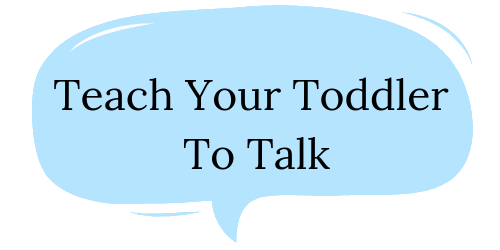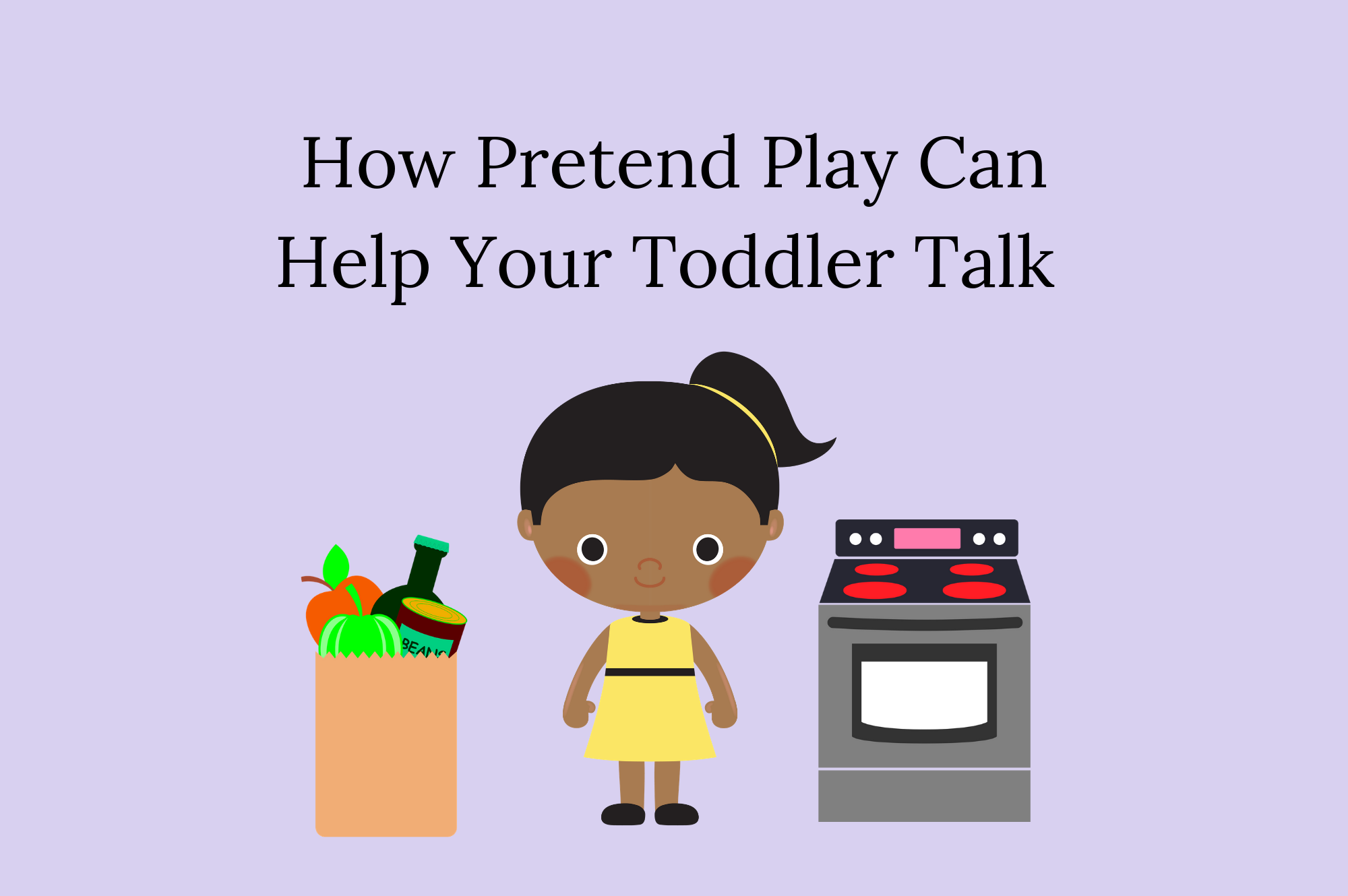Play is an important developmental skill for toddlers. When I am assessing the language of a late talker, I observe how they are playing with toys and with people. If a late talker is also behind in their play skills, this is a clue that the child may need some extra support to learn language and develop their ability to pretend play. In this article, I will outline the benefits of pretend play and how play can help your toddler talk.
Here are the stages of play for toddlers, according to the Hanen Centre. Check out the age range and see where your child falls in their play skills.
You can see that pretend play begins around 12 months of age, which is also the age that first words begin to emerge. As children turn 2, they start to put actions together in play. This is also when they typically put two words together. The connection between pretend play and language development has been shown in research for many years.
PRETEND PLAY IS LINKED TO LANGUAGE DEVELOPMENT
Words are symbols for things around us, meaning that a word represents something in the real world. For example, the word “lemon” represents the yellow, sour fruit, and the word “walk” represents the action when we put one foot infront of the other. Your child needs to understand these symbols in order to use words to communicate. Similarly, to engage in pretend play, the child must understand that one thing (a toy lemon) represents something else (a real lemon). Once they make this connection, they demonstrate this by pretending to eat the toy lemon, or feed it to a doll.
Some late talkers have great pretend play skills, while others may need help in this area. Either way, pretend play is a great way to develop your child’s language skills.
TIPS FOR SUPPORTING PRETEND PLAY
1. Play with your child
Playing with your child is the best way to encourage pretend play and expose them to lots of language learning opportunities. Get down on the floor with them so you are at their level. Model different actions for them to copy (e.g. eating, drinking, stirring, brushing). If they don’t copy the action, you can gently take their hand and help them copy you. Be animated and fun to keep their interest.
2. FOllow their lead
Use activities that your child is interested in. Wait to see what they are doing and join into their play, rather than taking the lead. Copy what they are doing, as it can get their interest and encourage them to copy you later.
3. Expose them to a variety of toys
It’s great for toddlers to have the opportunity to play with a variety of toys so they can have the opportunity to learn new vocabulary and new pretend actions. Here are some ideas for pretend toys for toddlers: kitchen set, baby dolls, vehicles, tool set, doctor, grocery store
4. Be a narrator
As you are playing with your child, talk about what is going on using short, simple phrases. You might talk about what you are doing, or what your child is doing (e.g. “I’m cutting the apple” “You’re feeding the baby”). Make sure to give time between comments for your child to respond, whether it’s just to look at you, do another action or make a sound. Using language during play is a great way to help your child understand the meaning of words and supports them to eventually be able to use those words.
5. Use repetition
Children learn through repetition, so don’t be afraid to do the same play actions over and over, or repeat the same words as long as your child is interested. If they lose interest, move on to another activity, or help them come back to the activity by doing something new.
SUMMARY
In conclusion, children learn through play, and pretend play is an important milestone in a child’s development. Use these strategies to support your child’s language learning through play activities!
FOR MORE LANGUAGE TIPS FOR TODDLERS, CLICK HERE TO DOWNLOAD THE FREE PRINTABLE:
References
Lowry, L. (n.d.). How and Why to Encourage Pretend Play. Retrieved from http://www.hanen.org/Helpful-Info/Articles/The-Land-of-Make-Believe.aspx




